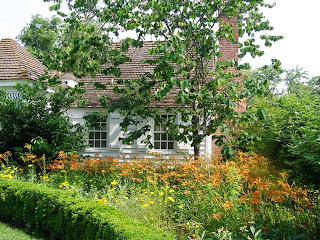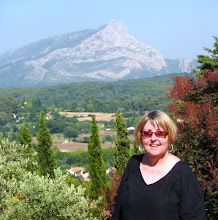This is the front of it, with atypical hotel room door handle signs.



This is the back garden. We could see it from our bathroom & dressing area windows.

One of the most charming things about Williamsburg for me is that almost everything is done the way it would have been done in the 18th century. The workers are all dressed in appropriate clothing. The restaurants have no electric lighting in the dining rooms, only candles, & serve meals consistent with the times. Streetlights are very dim & there are few of them. In fact, flashlights are provided in the rooms for people to use when they walk around after dark.
The area is walkable but quite large. One modern day convenience was a shuttle bus that ran around the perimeter from early in the morning until fairly late at night. It was much appreciated after a long day of walking.
We didn't bother with the camera at night, but we did spend one solid day seeing Williamsburg & took pictures then as well as at some special events on other days. Something is always going on in keeping with what would have been happening at the time. Tourists can join in on some of the activities, such as marching to protest something, or as Trout did, learning how to dance properly.
This is the building which housed the Capitol of the Virginia Colony starting in 1699 when it moved from Jamestown to Williamsburg. It is here that much later, the founding fathers started the seeds of revolution, the Constitution & the United States.
Washington, Jefferson & many others were Virginians. They sat in this very place to discuss the issues of the day. Trout & I sat in this room one night for a harpsichord concert, all by candlelight, of course.


The guy in the center of the street in costume was a slave who was saying he'd fight for the colonies, just give him a gun.




These ones already appear to have some skills.



Technological Distractions


 And he insisted I take a picture of the method used by the gates to stay closed.
And he insisted I take a picture of the method used by the gates to stay closed.



